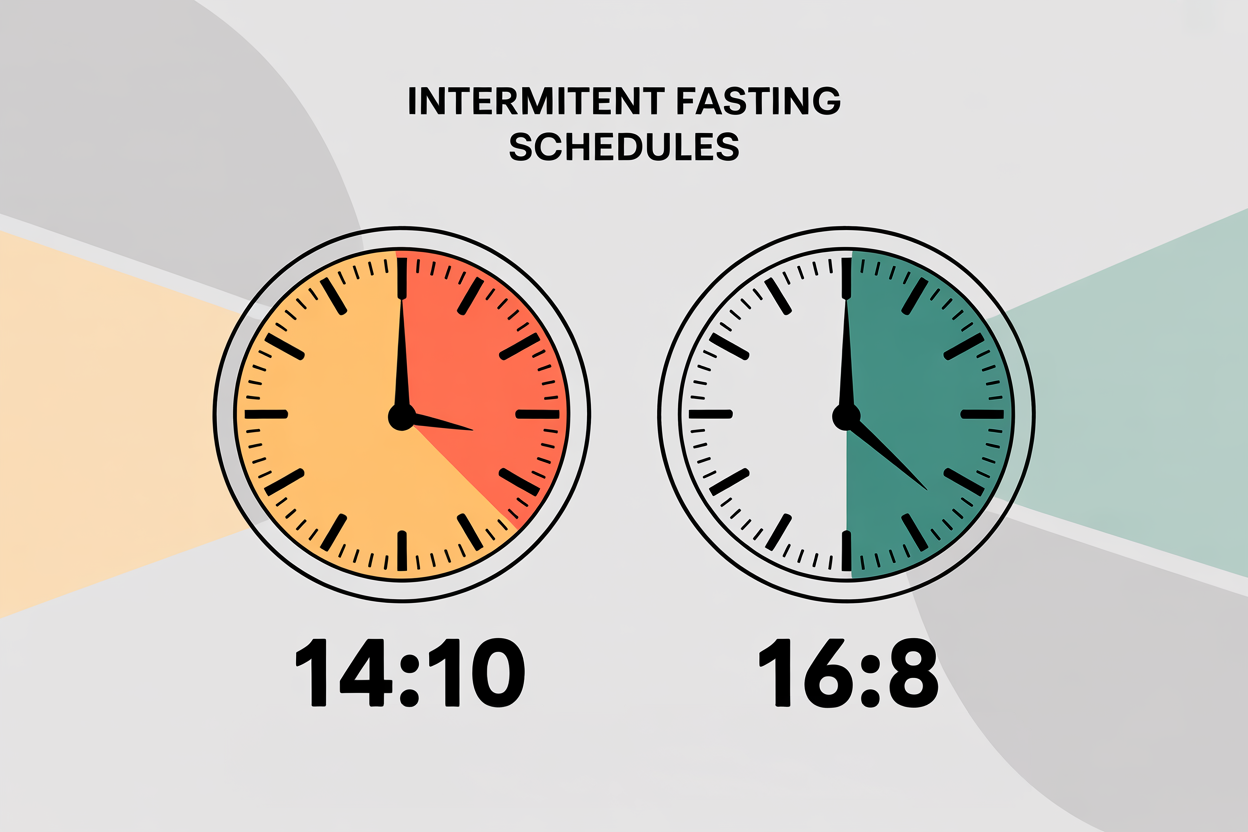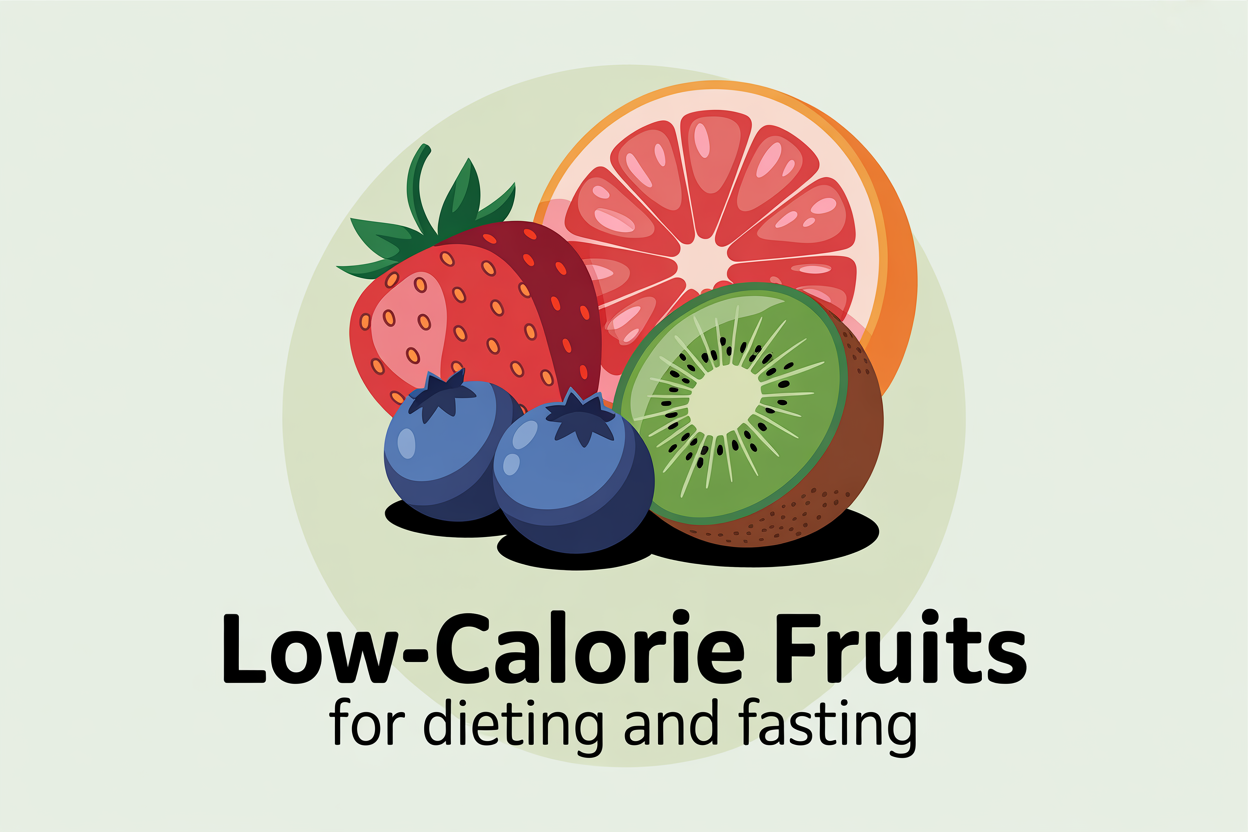Intermittent fasting involves alternating between periods of fasting and eating, and is associated with benefits including weight loss, enhanced insulin sensitivity, and improved cardiovascular health. However, choosing the right fasting method for your age and gender, whether it be time-restricted eating, a 5:2 schedule, or alternate-day fasting, can be crucial to get the most benefits.
For example, a more flexible schedule, such as a 16:8 later-day window that accommodates eating out for those in their early 20s, or a different plan for men versus women, may be beneficial. However, is there really a best fasting schedule based on your age and gender, or is it a matter of personal preference?
Let’s get into the nuts and bolts of intermittent fasting by age and gender, and how to find the most sustainable fasting plan for you.
Quick Takeaways
There’s no one-size-fits-all fasting plan—but age, gender, lifestyle, and hormones all influence which schedule may work best.
Flexibility is key in your fasting routine—whether that be social-friendly schedules for younger adults or longer eating windows in older adults to optimize nutrient intake and muscle health.
Personalization matters most—trial and error helps you find the most sustainable plan. The Fasting App makes it easier to track, adjust, and stay consistent while working toward your health goals.
Always speak to your doctor or a registered dietitian before starting a fasting plan, especially if you take medications or have a chronic medical condition like diabetes.
Benefits of Intermittent Fasting by Age and Gender
Several benefits of intermittent fasting have been observed in research across all genders and age groups, making it a viable option for many seeking to lose weight and improve their health without tracking calories. There may also be specific, unique benefits for certain age groups, and some may respond differently or achieve bigger fasting benefits based on their gender.

Weight loss
Intermittent fasting can help the body shift from using carbohydrates for fuel to using fat, which can aid in burning body fat. This creates substances called ketones (where the ketogenic or “keto” diet originates from) that serve as an alternative fuel source in times of fasting. These ketones are created from the breakdown of body fat.
Practicing intermittent fasting can also naturally reduce your calorie intake, as you’ll have a shorter window to eat. This can inevitably lead to weight loss from reduced calorie consumption, without having to always track the calories you’re taking in. For example, research shows intermittent fasting is just as effective as a continuous daily calorie restriction, which may feel more flexible and achievable for some people.
Improved insulin sensitivity
Fasting can lead to improvements in metabolic health, including insulin sensitivity. This means that insulin, the hormone responsible for regulating blood sugar, can work more effectively to maintain a healthy blood sugar level. This can be especially helpful for those with diabetes or pre-diabetes trying to manage their blood sugar, or those with already healthy blood sugar levels that want to keep them in the healthy range.
If you take insulin or other diabetes medication, consult with your doctor before starting a fasting plan, as your dose or schedule may need to be adjusted.
Cardiovascular health
Because fasting can lead to weight loss and reduced calorie intake, it is also linked to a lower heart disease risk. Intermittent fasting may also aid in improving blood lipid levels associated with heart disease, including total cholesterol, LDL cholesterol (the “bad” cholesterol), and triglycerides.
This is even more compounded in those who combine intermittent fasting with a regular exercise routine.
Reduced Inflammation
There is some evidence that intermittent fasting may be linked to reduced inflammation in certain populations and conditions. For example, one study of postmenopausal women with rheumatoid arthritis, an inflammatory condition, found that the intermittent fasting group had reduced inflammatory markers.
Another small study also showed fasting increased a chemical in the blood called arachidonic acid, which is known to inhibit inflammation.
Longevity
Research shows that various fasting methods can improve overall longevity by promoting a process called autophagy, a cellular renewal process that clears out damaged cells and recycles them into healthier, more functioning versions. This is seen in both women and men and across all ages.
Intermittent Fasting Times By Age – Does Age Matter?
Current research does not confirm a universal fasting schedule based on age, as everyone is unique. However, there are a few things to consider when determining what may be the best eating plan based on your level of experience, age, schedule, and lifestyle.
If you’re in the 18-30 age group
What to consider: A fasting schedule that matches your social life.
If you’re in this age range, you may want to tailor your fasting schedule to your social life. If you have an active social calendar, you’ll want to adjust your schedule so that your eating windows align with social times and you don’t feel left out.
This may mean a later eating window, such as a 16:8 schedule from 12:00 p.m. to 8:00 p.m., or you’re a night owl, or an earlier schedule, like 9:00 a.m. to 5:00 p.m. if you frequent coffee shops. Considering your typical routine beforehand can help you determine which schedule is best to start with, and you can always adjust it from there.
If you’re in the 30-45 age group
What to consider: A fasting routine that fits your juggling schedule.
This age group is one of the busiest for many, as you may be further along in your career or family life. Because of this, you’ll want to be flexible with yourself and start out with a less restrictive fasting schedule.
For example, starting with a 14:10 schedule where you fast for 14 hours but eat for 10 may be a more realistic starting point. Then, you can always dial it down to a shorter eating window, such as 16:8 or 18:6, once you adjust (if you have a need).
If you’re in the 45-60 age group
What to consider: A fasting schedule that supports mid-life changes and hormone health.
Hormonal changes and a reduction in calorie needs during perimenopause and menopause can cause unintended weight gain for many women. Because of this, a modestly narrow eating window, such as 16:8 or 18:6, can support a reduced calorie intake while still allowing enough time to get in key nutrients.
Research suggests time-restricted feeding windows like 16:8 can aid in reducing visceral fat, the more dangerous type of fat that accumulates around internal organs and leads to metabolic problems. This may help improve metabolic health markers, like insulin resistance, in this stage of life.
When practicing fasting in mid-life, it’s even more important to prioritize getting enough protein in your eating window and regular strength training, which will help maintain muscle and a more efficient metabolism.
If you’re in the 60+ age group
What to consider: A fasting schedule that is flexible and makes it easier to get in key nutrients.
While metabolism starts to gradually slow down and muscle loss occurs in mid-life, this is compounded after age 60. Because of this, this age group is at a higher risk of reduced muscle and bone mass, physical weakness, and fractures due to muscle breakdown and a slowed metabolism. Thus, choosing a fasting schedule that offers a longer eating window, such as 12:12 or 14:10, may be most beneficial in this stage of life.
Maximizing nutrient quality in the diet is also key for metabolism and physical function, and you’ll want to optimize your protein, calcium, and vitamin D intake.
Intermittent Fasting by Age Chart
This intermittent fasting by age chart summarizes special considerations, suggested fasting schedules, and expert tips to help personalize your fasting plan.
| Age Group | Special Considerations | Possible Fasting Schedule | Beginner tips |
| 18-30 | Your social calendar | 16:8, 18:6 | Align eating windows with your social schedule |
| 30-45 | Your juggling schedule | 14:10, 16:8, 18:6 | Be flexible with schedule, tweak to your life |
| 45-60 | Hormones and menopause changes | 16:8, 18:6 | Optimize protein and strength training to preserve muscle |
| 60+ | Risk for muscle loss, nutrient deficiencies | 12:12, 14:10 | Start with a longer eating window, maximize nutrient quality |
Intermittent Fasting by Gender
Men and women may respond differently to fasting, but the majority of the difference will be based on the individual’s own genetics, preferences, hormones, and schedules. The most significant differences between genders are seen in the areas of weight loss and insulin resistance, where men tend to achieve greater results in these areas.

Some research shows men may experience more profound weight loss from fasting than women, perhaps due to fluctuating female sex and reproductive hormones. This does not mean women cannot have success with fasting; however, it may just take a bit longer for some women. Other studies show that the amount of weight loss in some cases across genders may be similar, but that men may see a bigger reduction in visceral fat and their waist circumference.
Men with pre-diabetes specifically following an early time-restricted fasting plan experienced improvements in insulin sensitivity, citing more specific benefits for men.
Men may also adjust to a fasting routine more quickly, as some men may traditionally eat less often or skip the first meal of the day, while women tend to eat more regularly and frequently.
Considerations for Men
For men who already skip breakfast or have their first meal later in the day, a later fasting schedule may be an easy transition, such as eating from 12:00 p.m. to 8:00 p.m. or 12:00 p.m. to 6:00 p.m. In addition, pairing your fasting routine with regular exercise and strength training is essential for men. Heavier strength training in particular may increase testosterone levels, which supports an overall faster metabolism.
Considerations for Women
Understanding your typical schedule and how long you go without eating is an essential starting point for women. If you are only going 8-10 hours without eating right now, you won’t want to jump right into an 18:6 fasting plan where you fast for 18 hours, as it can make the process feel harder and accelerate hunger. A slower, more gradual transition may be best for women, starting with a 12:12 or 14:10 schedule, based on your usual routine, and prioritizing regular meals rich in protein during your eating windows.
Strength training for women, just like for men, is crucial and can help support hormone health, muscle strength, and a faster metabolism.
Signs Your Intermittent Fasting Schedule Isn’t Working
When progressing in your fasting journey, here are a few signs your schedule may not be right for you and it may be time to modify:
- It doesn’t match your lifestyle/social schedule: If you find yourself socializing a lot during fasting times, it may be time to adjust your fasting schedule so you don’t feel like the outlier who isn’t eating when everyone else is.. Also, if you’re a night owl and your current eating window ends at 4:00 p.m., you may want to reassess to align your eating times with your circadian rhythm.
- You feel hungry all the time: Feeling very hungry or ravenous is a sign that your fasting schedule may be too restrictive, or it doesn’t align with your natural meal times. If it’s more of a moderate hunger or natural adjustment to fasting, you can try taking a closer look at what you’re eating and how often first. You’ll want to make sure you’re eating regularly enough for your needs and your meals contain enough protein and fiber to keep you full.
- It doesn’t align with your workout schedule: If you’re active (which is a good thing!), you’ll want to tailor your fasting schedule to your workout times. For example, if you love early morning cardio but your eating window doesn’t start until noon, you may find yourself fatigued during your workout and at risk of overeating at that first meal.
Special Considerations
There are specific populations and situations where fasting may be contraindicated or a more formal discussion with your doctor may be warranted:
Pregnancy and breastfeeding: The only studies to date on pregnancy and fasting are from those practicing fasting during Ramadan, where benefits were seen, but the research is not robust enough to recommend it for all pregnant and breastfeeding women.
Women who are pregnant or breastfeeding have increased nutritional requirements that can be difficult to meet on a fasting schedule. Hunger may also increase, and daily schedules can vary significantly based on the baby’s schedule, making it hard to follow a set fasting schedule every day.
Diabetes: Those with diabetes or pre-diabetes should consult their doctor for guidance before starting a fasting regimen. This is especially important if you are taking insulin or another blood-sugar-lowering medication, as the dose or timing may need to be adjusted based on your new eating times.
Prescription medications: Certain medications require food for proper absorption, and so it’s important to ensure the timing of your medications with fasting aligns with this. Some medications or supplements may also contain sugar or calories, such as gummies, which stop the fasting process. If you take any medications or supplements, speak to your doctor about your options.
Eating disorders: Those with a history of an eating disorder, such as binge eating or anorexia, or who have eating disorder tendencies, should not practice fasting. While fasting can be an effective, safe method for many people, self-imposing a more rigid eating window or rules on when you can eat can cause eating disorder behaviors to resurface.
Key Takeaways
Intermittent fasting offers benefits for all ages and genders, ranging from weight loss, improved insulin sensitivity and better heart health. While research doesn’t confirm a single “best” intermittent fasting by age and gender plan, your fasting schedule should align with your preferences, schedule, hormones, and stage of life. This may vary based on the person and can be tweaked with a bit of trial and error.
The Fasting App can help you fine-tune your routine and track your schedule to find a fasting method that supports your goals. Remember to always consult with your registered dietitian or doctor before starting, especially if you have a chronic condition like diabetes or take medications.



